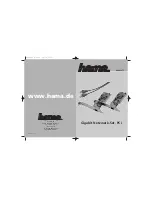
ACR101I – Reference Manual
Version 1.01
www.acs.com.hk
Page 3 of 21
1.0. Introduction
The ACR101I SIMicro (CCID) is more than just your ordinary SIM-sized smart card reader. With the
combination of a smart card reader and a Micro SD card slot in a compact USB token, ACR101I
SIMicro (CCID) provides you with complete support for highly secured mobile applications.
Furthermore, it has an embedded MIFARE® Classic (1K) chip that allows the device to be used for
contactless applications such as logical and physical access. ACR101I SIMicro (CCID) is also
available in HID, bringing you the same plug-and-play convenience, which does not require any
special driver installation.
1.1. SIM-sized Smart Card Reader
ACR101I SIMicro (CCID) is a compact and powerful reader with its
reliable support for ISO 7816 microprocessor smart cards. It works
with most memory cards and microprocessor cards with the T=0
and T=1 protocol.
With security as its top priority, the ACR101I SIMicro (CCID) gives
you the option to integrate highly secured technologies, such as
PKI (Public Key Infrastructure), into your applications for maximum
protection of sensitive data.
1.2. Memory Storage Device
Aside from being a SIM-sized smart card reader, ACR101I SIMicro (CCID) is also a storage device.
With a dimension of 72.0 mm × 26.0 mm × 11.7 mm, this USB-powered device can be brought
anywhere and used without any cable. The ACR101I SIMicro (CCID) is also capable of supporting up
to 8 GB expandable Micro SD memory.
1.3. Contactless Feature
The ACR101I SIMicro (CCID) has an embedded MIFARE Classic 1K chip which enables it to act as a
contactless card. Its contactless attribute allows flexibility in using this powerful device in a wide array
of applications, such as physical and logical access control.
1.4. Ease of Integration
With ACR101I SIMicro (CCID) being compliant with the (CCID) Chip/Smart Card Interface Devices
and PC/SC standards, it is easier to integrate in a computer-based environment by eliminating driver
installation prior to use. In addition, ACR101I SIMicro (CCID) may now be used on mobile devices
running the Android™ platform with versions 3.1 and above.
With its wide array of features, ACR101I SIMicro (CCID) can be used in various application areas,
such as Public Key Infrastructure, network security and GSM management.




































